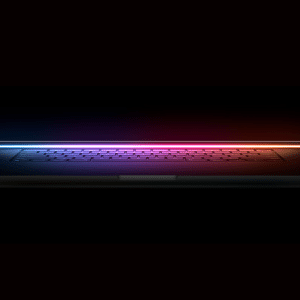The M4 iPad Pro, launched in May 2024, introduced an OLED display, a thinner design, and the powerful M4 chip. However, some users, as highlighted by 9to5Mac, regret skipping the nano-texture glass option, which reduces glare for better visibility in bright environments like sunny offices or outdoor settings. The standard glossy display, while vibrant, struggles with reflections, making it less ideal for frequent use in varied lighting. This oversight has driven anticipation for the M5 iPad Pro, which is expected to offer the nano-texture option more prominently, per Bloomberg’s Mark Gurman.
Beyond display choices, the M4’s high starting price—$999 for the 11-inch and $1,299 for the 13-inch—drew criticism, especially since the 256GB base storage feels limiting for professionals. The M5 iPad Pro is likely to maintain similar pricing but could address storage concerns, with rumors suggesting a possible bump to 16GB base RAM to better support Apple Intelligence features, according to posts on X from @iPhone_News.

What the M5 iPad Pro Brings to the Table
The M5 chip, already in testing per MacRumors, will use TSMC’s advanced 3-nanometer process for improved performance and efficiency. While the M4 was a significant leap, the M5 is expected to deliver a 5-10% performance boost and better power management, ideal for tasks like 4K video editing or running multiple pro apps. This aligns with Apple’s 18-month iPad Pro update cycle, with the M5 model set to launch around September 2025, alongside iPadOS 19, as reported by Macworld.
iPadOS 19 is rumored to introduce a Mac-style menu bar and an overhauled Stage Manager, enhancing multitasking for professionals. These software upgrades, paired with the M5’s power, could make the iPad Pro a stronger laptop replacement. For users frustrated by the M4’s software limitations, such as clunky Stage Manager workflows, iPadOS 19’s refinements are a major draw. The M5 iPad Pro may also retain the OLED display, with Meritz Securities noting no major hardware changes beyond the chip, ensuring vibrant visuals without reinventing the wheel.
Why Upgrade? Practical Benefits for Users
For M4 owners, the nano-texture display alone could justify the upgrade, especially for those working in bright environments. A matte screen reduces glare, making it easier to edit photos or read documents outdoors. Affordable alternatives like Paperlike screen protectors exist, but Apple’s nano-texture glass offers a premium, integrated solution. The M5’s efficiency gains also promise longer battery life, crucial for travelers or remote workers relying on the iPad as their primary device.
The M5 iPad Pro’s timing is strategic. Launching with iPadOS 19, it will fully leverage new AI-driven features, such as enhanced Siri capabilities or Image Playground, which demand more RAM and processing power. For creative professionals, the combination of a faster chip, better software, and a glare-free display could streamline workflows, from sketching with Apple Pencil Pro to managing complex projects. Even casual users will appreciate smoother performance in gaming or streaming.
Challenges and Considerations
The M5 iPad Pro isn’t without potential drawbacks. High prices, especially if tariffs on TSMC’s Taiwan-made chips raise costs, could deter budget-conscious buyers, per Macworld. The lack of Apple’s in-house C1 modem until 2027, as noted by AppleInsider, means cellular models will rely on third-party modems, potentially limiting 5G performance. Additionally, with no major design changes, some may question the need to upgrade from the M4, especially if software updates alone suffice.
Despite these concerns, the M5 iPad Pro’s blend of hardware and software advancements makes it a smart choice for those seeking a future-proof device. For M4 owners regretting their purchase, trading in for decent value—potentially $500-$600 based on past trends—could ease the transition. The M5 iPad Pro promises to deliver where the M4 fell short, ensuring a more polished experience.














